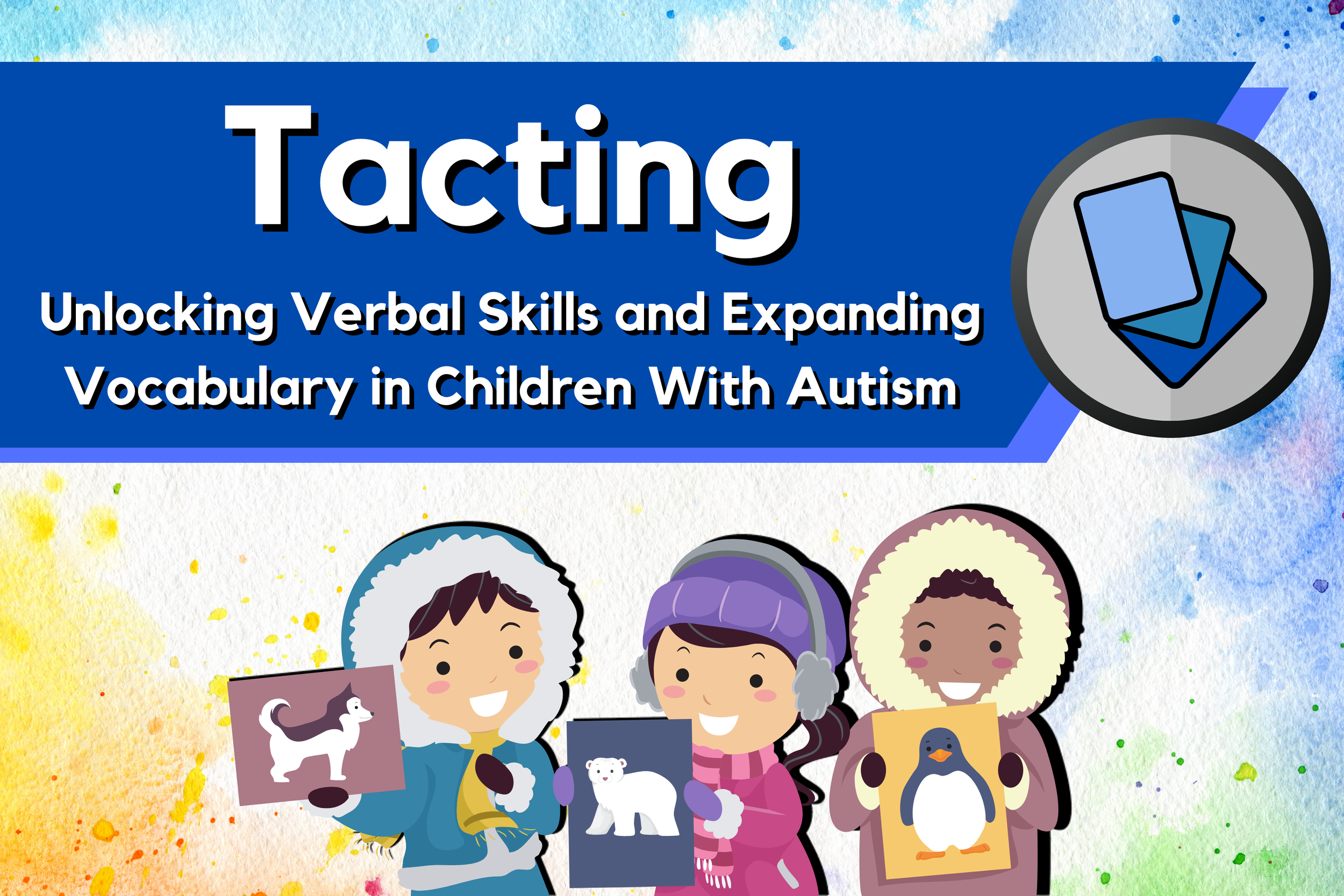Tacting: Unlocking Verbal Skills and Expanding Vocabulary in Children With Autism
Communication is a fundamental human skill that forms the basis for connecting with others, expressing thoughts and feelings, and navigating the world. However, for children with autism, developing verbal skills and expanding their vocabulary can be a challenging journey.
An effective method to assist them in this process is “tacting,” which involves labeling items and experiences in their environment. Let’s explore how tacting can be a powerful tool to help children with autism enhance their vocabulary and verbal abilities.
What Is Tacting?
Tacting is a concept derived from Applied Behavior Analysis (ABA), a therapeutic approach widely used in autism intervention. The term tact is derived from the word contact, implying one’s contact with the environment (Greer & Ross, 2008).
It involves teaching individuals to verbally identify or label items, actions, or experiences in their environment. This can be as simple as saying "ball" when seeing a ball or "I see a red car" when spotting a red car. Tacting helps bridge the gap between sensory perception and verbal expression.
Tacting is so much more than labeling simple objects; it’s also words we use to describe objects. Other ways we tact include the following:
Adjectives that describe color, shape, size, etc.
Pronouns such as us, we, you, I, she, he, yours, or mine
Feelings and emotions such as happy, upset, and tired
Prepositions such as up, down, behind, next to, etc.
Taste descriptors like sweet or sour
Textures like soft, rough, bumpy, and smooth
Activities such as walking, drinking, and eating
Smells, such as cinnamon or the scent of a freshly baked cookie
The Benefits of Tacting for Children With Autism
Enhancing Vocabulary: Tacting encourages children with autism to learn and use new words to describe the world around them. By repeatedly labeling objects and experiences, they expand their vocabulary, which enables them to communicate more effectively.
Improving Communication Skills: Tacting helps children with autism improve their expressive language skills. It gives them a tool to communicate their thoughts, preferences, and needs, reducing frustration and enhancing their ability to interact with others.
Building a Conceptual Understanding: Beyond words, tacting can also help children with autism develop a deeper understanding of concepts. For instance, by labeling different types of fruits, they not only learn the names but also categorize them based on similarities and differences.
Encouraging Social Interaction: As children with autism acquire verbal skills through tacting, they become more capable of engaging in social interactions. They can initiate conversations, share their interests, and connect with peers, parents, and caregivers.
Promoting Independence: Tacting empowers children with autism to navigate their environment more independently. They can request items, ask questions, and share their experiences, which fosters a sense of autonomy.
Reducing Challenging Behaviors: Communication difficulties can often lead to frustration, anxiety, and challenging behaviors in children with autism. Tacting helps mitigate these challenges by giving them a means to express themselves.
Practical Tips for Implementing Tacting
Start Simple: Begin with basic items and concepts and then gradually approach more complex ones. Use real objects, pictures, or visual aids to support learning. Hold the item and present it while saying it.
Consistency is Key: Practice tacting regularly and consistently to reinforce vocabulary and language development.
Offer Positive Reinforcement: Praise and reward children for successful tacting. Positive reinforcement can motivate them to continue using their verbal skills.
Be Patient: Every child is unique, and progress may vary. Be patient and tailor your approach to suit the child's pace and needs.
Seek Professional Guidance: Consider enlisting the help of a qualified speech therapist or ABA therapist to develop a personalized tacting program for your child.
Conclusion
Tacting, or labeling items and experiences, is a valuable tool for enhancing vocabulary and verbal skills in children with autism. By incorporating this technique into their daily lives and therapeutic interventions, parents, caregivers, and professionals can help children with autism build a foundation for effective communication, social interaction, and overall independence. With patience, consistency, and the right support, children with autism can unlock their full potential and navigate the world with confidence.
Sources Cited:
Greer, D. & Ross, D. Verbal Behavior Analysis: Inducing and Expanding New Verbal Capabilities in Children with Language Delays.
Matos, D. & Matos, P. Assessment, Intervention and Consulting in School Psychology in Children with Autism: LAPITEA Laboratory in Brazil.




